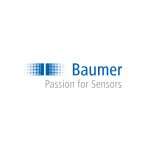Three common mistakes in instrumentation sensor selection
Instrumentation sensors are critical to ensuring the quality of data within feedback systems for process monitoring and control. To ensure that a manufacturing process remains consistent, within its set parameters and working for optimum efficiencies, the selection of the most appropriate sensor for each area is extremely important. We take a look below at three of the most common mistakes made in instrumentation sensor selection.
Selecting the wrong sensor
Instrumentation sensors are used in the monitoring of control processes, primarily in feedback systems to control quality or quantity of production. They are vital in measuring process performance and ensuring the quality and safety of the process and product through the data provided by the sensor. There is a whole range of sensors, each designed for a specific job within a process; below is an overview of the range of sensors and some examples of the purpose of each type:
- Level measurement - Maximum/minimum point detection in a storage tank, leakage detection, detection of media with or without contact.
- Pressure measurement - Pressure monitoring in liquids and gases, leak detection in closed systems, pump regulation.
- Temperature measurement - Temperature monitoring and control for Clean in Place(CIP)/sterilisation, measurement of room or ambient temperature for cold rooms.Force and strain sensors – Measurement of forces and strains in industrial processes such as injection moulding and die casting.
- Flow measurement - Monitoring of cooling circuits, dry run protection for pumps, fluid monitoring.
- Conductivity measurement - Solution concentration measurement, media type detection.
These sensors are used across a whole range of industries that implement process control and monitoring, such as food and drink, pharmaceutical, chemical, oil and gas. There are also sensors designed for specific industries, in some cases, where standard versions may not be sensitive or robust enough.
In terms of making an incorrect selection when choosing a sensor, if you were to select a standard temperature sensor rather than a hygienic temperature sensor for use within food or a pharmaceutical process, the result could be catastrophic; it would create a health risk for the consumer and business risk for the manufacturer. Similarly, selecting a standard strain sensor instead of a miniature industrial strain sensor may provide the data that you require but may not be suitable for the specific application where space is limited or equipment has small structural dimensions – potentially resulting in poor data feedback or the damage of expensive equipment.
Incorrect installation
In installing the sensor incorrectly, the first risk is in damaging the sensor itself or any connected system, such as in the example above of selecting a standard instead of a miniature industrial strain sensor.
Secondly, in any system that utilises sensors for feedback to control the process, any error in the installation that leads to inaccurate data can have potentially catastrophic consequences. For example, during a clean-in-place (CIP) procedure if the cleaning medium doesn't reach a high enough temperature it will leave potential contamination in the system, creating a health risk. Similarly, a lack of fluid in a storage tank pump might run dry, causing a costly failure. A common adage within data processing is that the only thing worse than having no data is having incorrect data. Good decisions made with bad data are often worse than no decision at all.
Poor maintenance and aftercare
Similarly to the examples above, if a sensor is not maintained, inspected and looked after post-installation, it has the potential to fail. A lack of data would indicate a failure and prompt response. However, a more serious failure would be for the sensor to provide inaccurate or intermittent data, causing an inappropriate system response. The risk could be anything from the spoiling of the product through to catastrophic system failure. All sensors should be installed and maintained in line with any instructions provided at the point of purchase.
How can you avoid making the three most common errors in instrumentation sensor selection?
Baumer UK are experts in instrumentation sensors. With 70 years of experience and a global reputation for excellence in automated processing, they can help you to select, install and maintain the most effective instrumentation sensor for your processing systems. You can read more about the range of sensors offered by Baumer on their comprehensive website, or you can contact them for support and advice as experts and partners in providing technical solutions.
Get the latest process industry news
Interested in receiving even more industry-leading news from Process Industry Forum delivered directly to your inbox? Then sign up to our free newsletter. Bringing you the latest news, trends, innovations and opinion from across the process industry, our exclusive newsletter gives you all the industry insights of the moment in one, easy-to-digest bulletin. Stay ahead of the competition with regular process industry news instalments from PIF.

